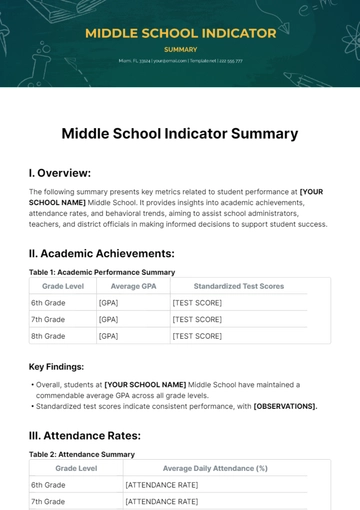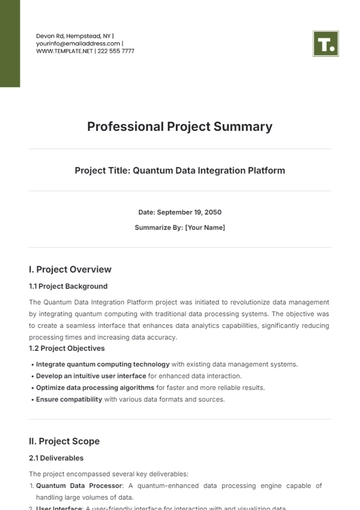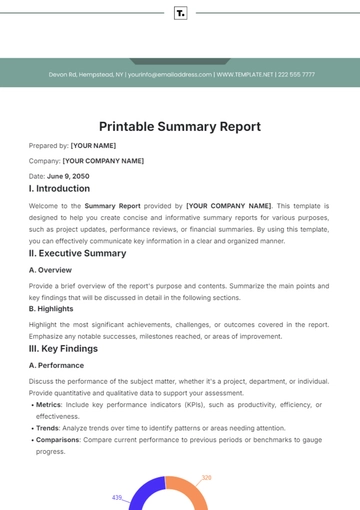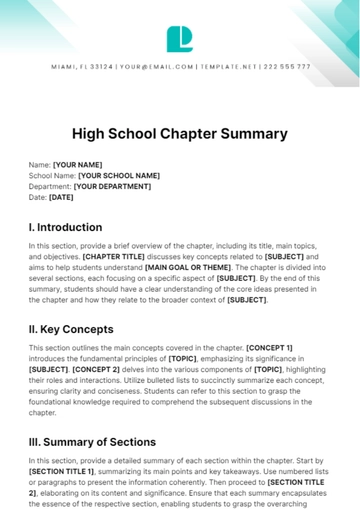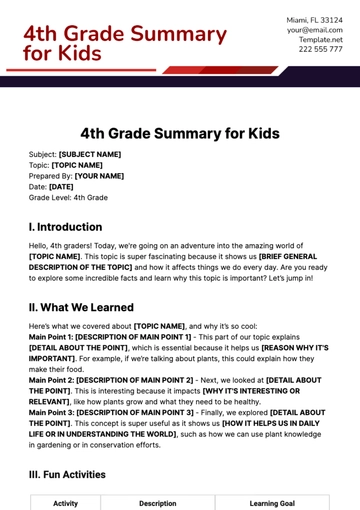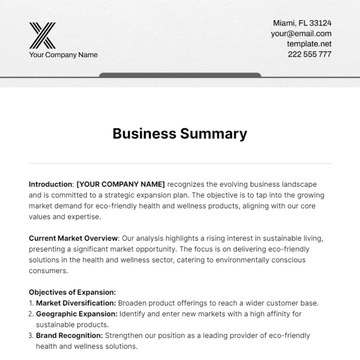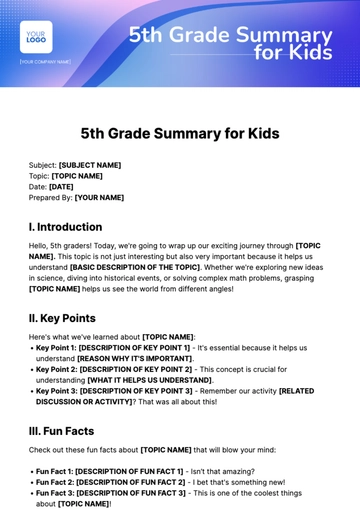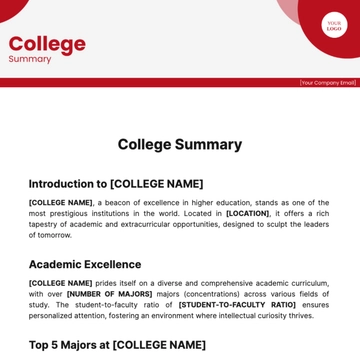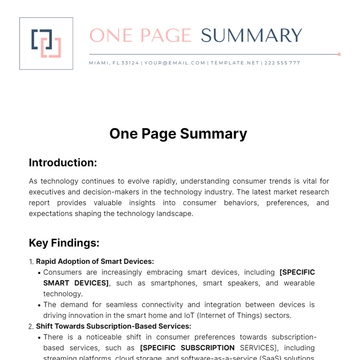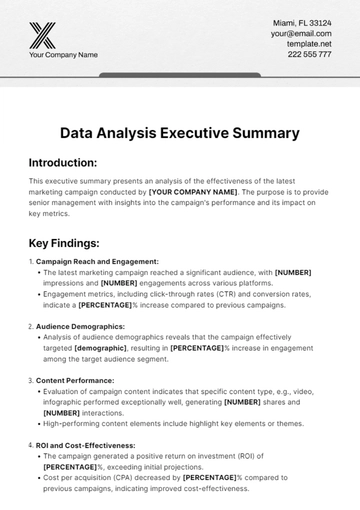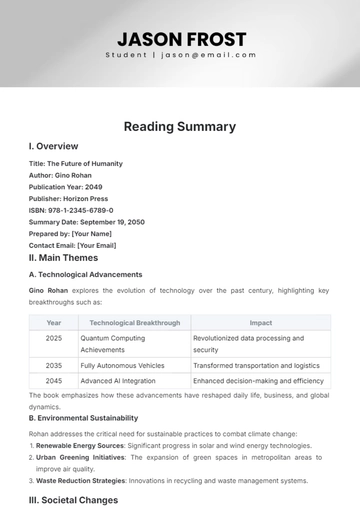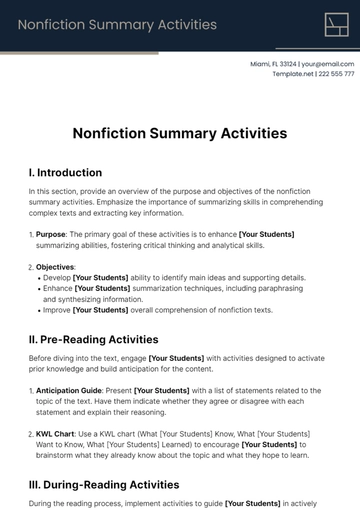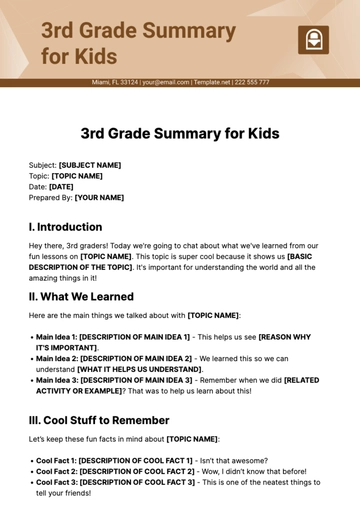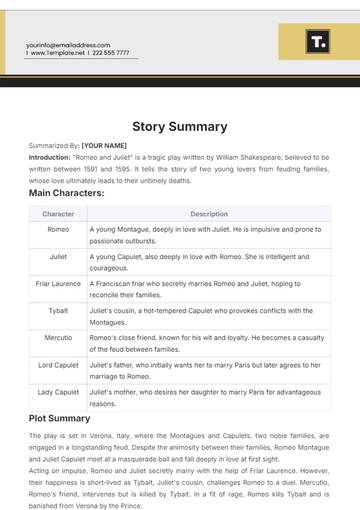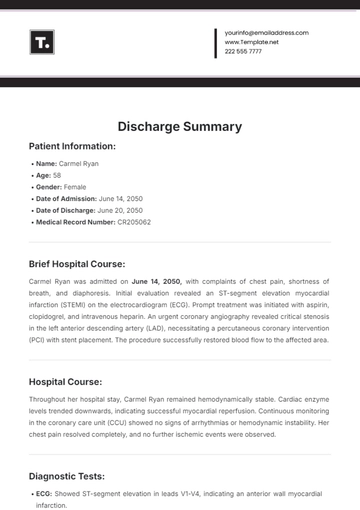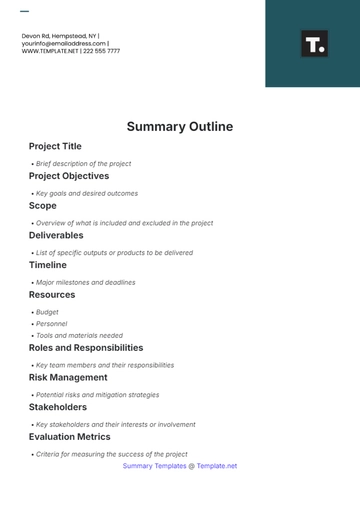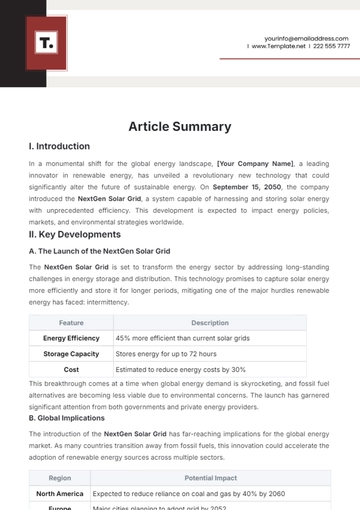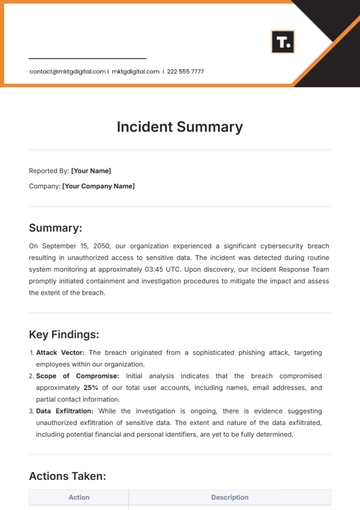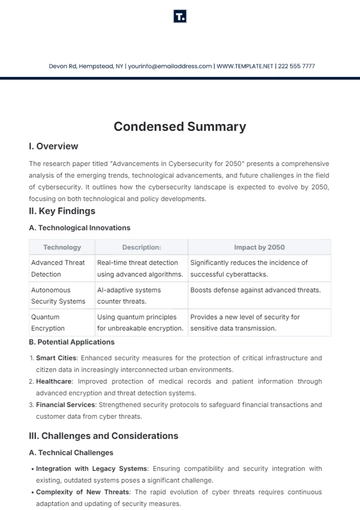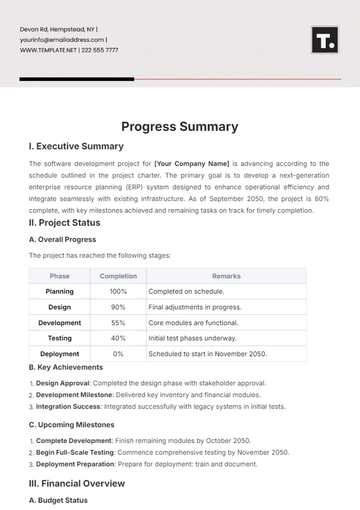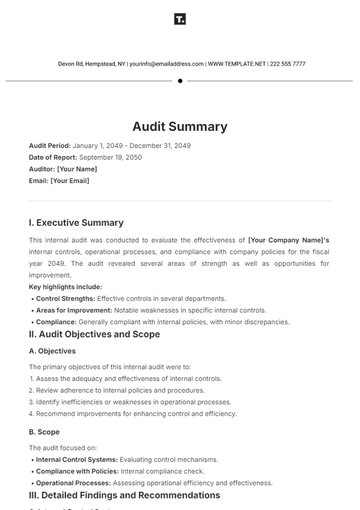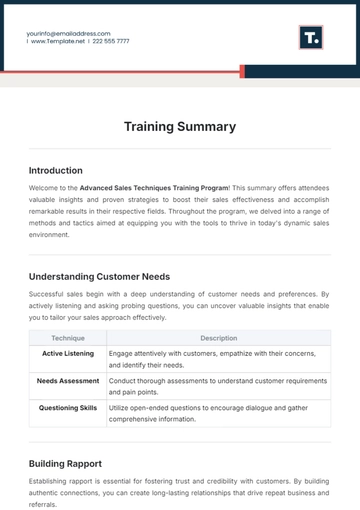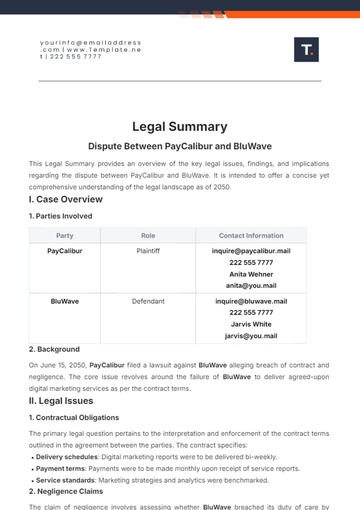Free Case Study Summary
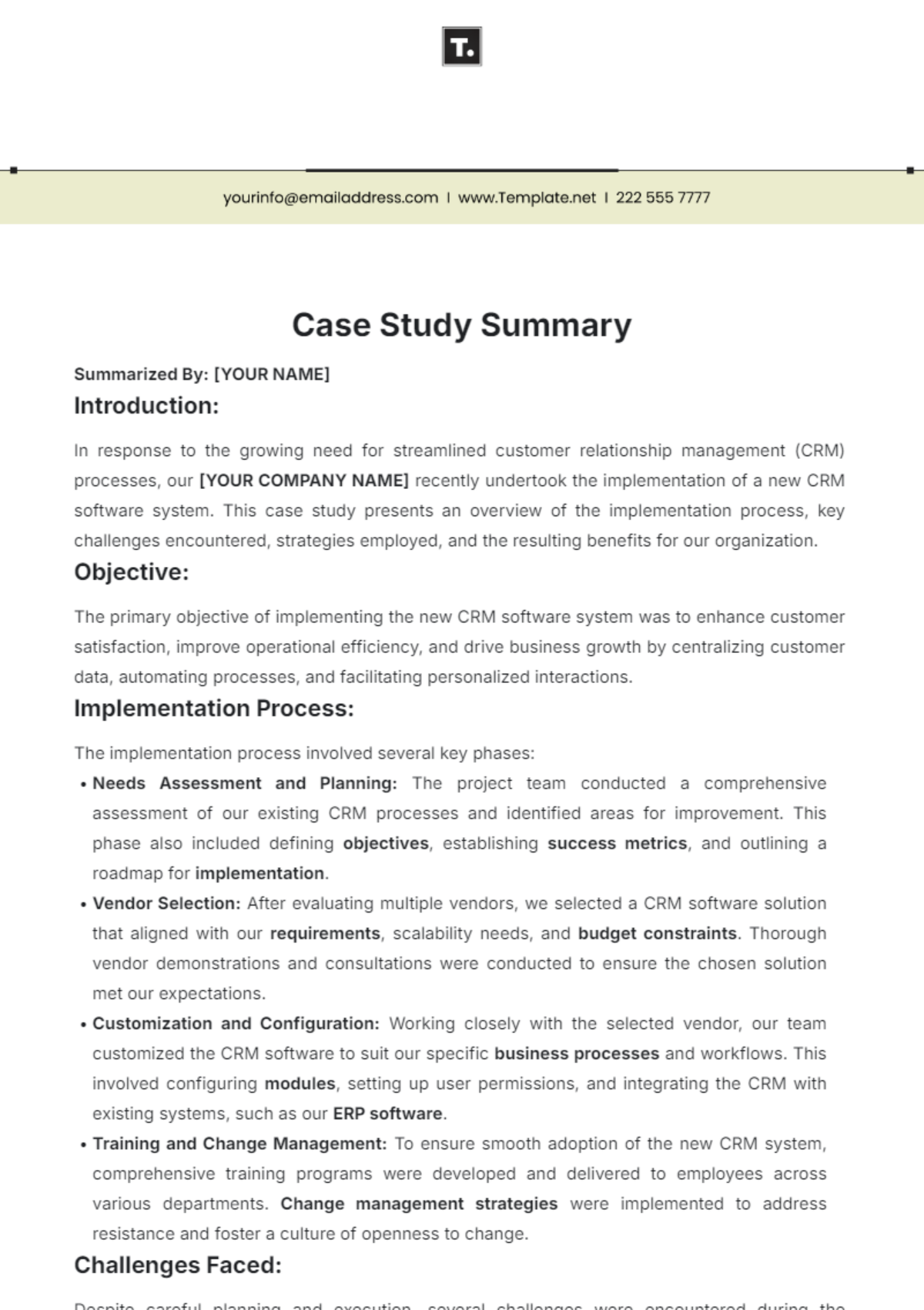
Summarized By: [YOUR NAME]
Introduction:
In response to the growing need for streamlined customer relationship management (CRM) processes, our [YOUR COMPANY NAME] recently undertook the implementation of a new CRM software system. This case study presents an overview of the implementation process, key challenges encountered, strategies employed, and the resulting benefits for our organization.
Objective:
The primary objective of implementing the new CRM software system was to enhance customer satisfaction, improve operational efficiency, and drive business growth by centralizing customer data, automating processes, and facilitating personalized interactions.
Implementation Process:
The implementation process involved several key phases:
Needs Assessment and Planning: The project team conducted a comprehensive assessment of our existing CRM processes and identified areas for improvement. This phase also included defining objectives, establishing success metrics, and outlining a roadmap for implementation.
Vendor Selection: After evaluating multiple vendors, we selected a CRM software solution that aligned with our requirements, scalability needs, and budget constraints. Thorough vendor demonstrations and consultations were conducted to ensure the chosen solution met our expectations.
Customization and Configuration: Working closely with the selected vendor, our team customized the CRM software to suit our specific business processes and workflows. This involved configuring modules, setting up user permissions, and integrating the CRM with existing systems, such as our ERP software.
Training and Change Management: To ensure smooth adoption of the new CRM system, comprehensive training programs were developed and delivered to employees across various departments. Change management strategies were implemented to address resistance and foster a culture of openness to change.
Challenges Faced:
Despite careful planning and execution, several challenges were encountered during the implementation process:
Resistance to Change: Some employees were initially resistant to adopting the new system due to fear of unfamiliar technology or concerns about job security. Addressing these concerns required proactive communication, training, and leadership support.
Data Migration Complexity: Migrating data from legacy systems proved to be more complex than anticipated, requiring thorough data cleansing, mapping, and validation processes to ensure accuracy and completeness.
Integration Issues: Integrating the system with existing systems, such as our ERP software and marketing automation platform, presented technical challenges that required close collaboration between internal IT teams and external vendors.
Results and Benefits:
The implementation of the new CRM software system has yielded significant benefits for our organization:
Improved Data Accessibility and Accuracy: Centralizing customer data within the CRM system has improved data accessibility and accuracy, enabling more informed decision-making and personalized customer interactions.
Enhanced Productivity and Efficiency: Automation of routine tasks and streamlined workflows have increased productivity and efficiency across sales, marketing, and customer service functions.
Better Customer Insights: Advanced reporting and analytics capabilities within the CRM system have provided deeper insights into customer behavior, preferences, and trends, enabling targeted marketing campaigns and more effective sales strategies.
Increased Customer Satisfaction: By providing a unified view of customer interactions and preferences, the new CRM system has enhanced our ability to deliver personalized, timely, and relevant services, resulting in higher levels of customer satisfaction and loyalty.
Conclusion:
The successful implementation of the new CRM software system represents a significant milestone in our ongoing efforts to improve customer relationship management processes and drive business growth. Despite initial challenges, the dedication and collaboration of our team, coupled with effective change management strategies, have enabled us to realize tangible benefits and position our organization for continued success in the competitive landscape.
- 100% Customizable, free editor
- Access 1 Million+ Templates, photo’s & graphics
- Download or share as a template
- Click and replace photos, graphics, text, backgrounds
- Resize, crop, AI write & more
- Access advanced editor
Introducing the Case Study Summary Template from Template.net. Crafted to perfection, this editable and customizable tool streamlines your case study summaries effortlessly. Tailor-made for your convenience, it's editable in our Ai Editor Tool, ensuring seamless modifications. Elevate your presentations with this dynamic solution, exclusively at Template.net.
